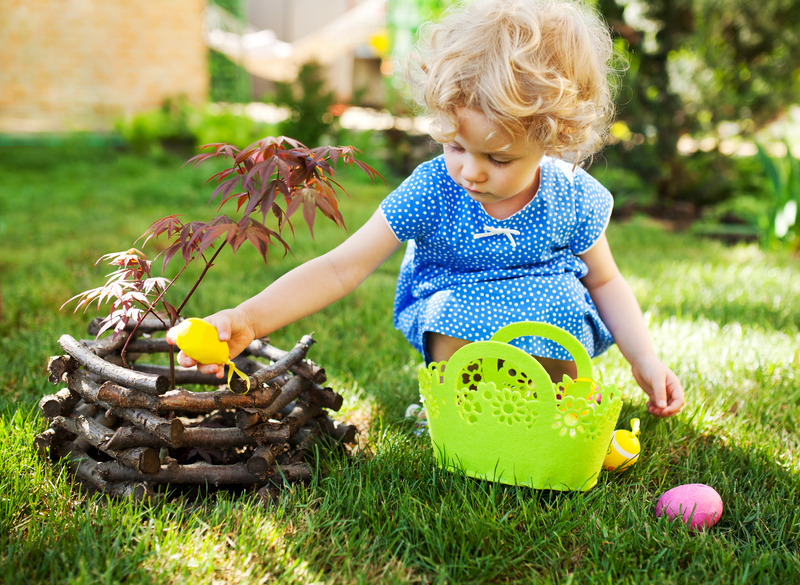Simple Steps to Remove Burnt-on Residue from Your Stovetop
Posted on 18/05/2025
Simple Steps to Remove Burnt-on Residue from Your Stovetop
Burnt-on residue is a common kitchen nuisance that can turn your beautiful stovetop into a stubborn, stained mess. Whether you're dealing with a gas stove, electric cooktop, or a sleek glass surface, learning how to efficiently remove burnt-on stains is essential for both cleanliness and appliance longevity. In this comprehensive guide, we'll walk you through simple, step-by-step methods to clean burnt-on spills and keep your stovetop sparkling clean.

Why Removing Burnt-on Residue Is Important
When grease and food particles are allowed to build up and burn onto your stovetop, they not only create an unsightly mess but can also affect your cooking experience and even damage the appliance over time. Cleaning your stovetop regularly helps:
- Maintain efficiency by ensuring burners heat evenly
- Preserve the appliance and avoid costly repairs
- Prevent odors and smoke during cooking
- Enhance the appearance of your kitchen
Essential Supplies for Cleaning Burnt Stovetop Residue
To get started, gather the following cleaning tools and ingredients. Having all your supplies ready will make the task faster and more efficient:
- Baking soda
- White vinegar
- Dish soap (preferably degreasing)
- Microfiber cloths or non-abrasive sponges
- Plastic or silicone scraper
- Spray bottle (optional)
- Paper towels
Before You Begin: Stovetop Safety Tips
- Always ensure your stove is turned off and completely cool before attempting to clean burnt-on residue.
- Check appliance manuals for any surface-specific recommendations or warnings.
- Test any cleaning solutions on a small, inconspicuous area first to avoid damage.
Step-By-Step Guide: Removing Burnt-on Residue from Your Stovetop
Step 1: Loosen Tough Burnt Residue with Heat and Moisture
Sometimes, the most effective way to tackle burnt-on stovetop messes is by softening them up first. Here's how:
- Wet a clean towel with hot water.
- Lay the towel over the burnt residue on your stovetop.
- Let it sit for 15-20 minutes.
This step helps loosen hardened food particles and scorched grease, making it easier to lift them away without scratching.
Step 2: Apply Baking Soda Paste for Deep Cleaning
Baking soda is mildly abrasive and great at dissolving residue. To use:
- Mix 2-3 tablespoons of baking soda with just enough water to form a thick paste.
- Spread the paste generously over all affected areas on the stovetop.
- Allow it to sit for 15-30 minutes.
During this time, the baking soda will begin to lift and break down burnt stains and stubborn grime.
Step 3: Scrub Gently and Effectively
Once the baking soda has worked its magic, use a microfiber cloth or a soft sponge to gently scrub the stovetop. For really tough, stuck-on spots:
- Use a plastic or silicone scraper to carefully lift off the burnt residue.
- Avoid using steel wool or abrasive pads that can scratch the surface.
Be patient and persistent--sometimes just a little more elbow grease is all you need!
Step 4: Degrease and Disinfect with Vinegar Solution
To remove lingering grime and give your stove a sparkling shine, mix equal parts white vinegar and water in a spray bottle:
- Spray the entire stovetop surface with the vinegar solution.
- Let it sit for 5-10 minutes before wiping with a clean cloth.
- This step helps to neutralize odors and cut through grease residue left behind.
Step 5: Rinse and Dry Thoroughly
Once you've removed all visible residue:
- Wipe down the stovetop with a damp microfiber cloth to remove any remaining cleaner or residue.
- Use a dry cloth or paper towel to buff the surface to a shine.
Bonus Step: Clean Stove Burner Grates & Knobs
Don't forget about the grates, burners, and control knobs--they can also harbor burnt-on grime:
- Remove grates and soak in hot, soapy water for 15 minutes, then scrub with a brush.
- Wipe knobs with a cloth dampened with dish soap solution.
- Dry thoroughly before reassembling.
Special Techniques for Glass, Induction, and Ceramic Stovetops
Cleaning burnt-on residue from smooth glass or induction cooktops requires extra care to avoid scratching:
- Use a razor blade scraper at a 45-degree angle to gently lift stuck spots (always consult your appliance manual first).
- Avoid using abrasive cleaners--stick with baking soda paste and vinegar.
- Buff with a soft cloth to prevent streaks and retain the glossy finish.
Tip: For a quick shine, use a glass cooktop cleaner after removing burnt residue and buff with a microfiber towel for that showroom sparkle.
Professional Tips for Stubborn Burnt-on Stovetop Stains
- For extra-tough stains, apply a layer of baking soda paste, then cover with damp paper towels and let sit overnight. In the morning, the residue will be much easier to remove.
- Repeat the process for especially difficult or old stains; sometimes, multiple treatments are needed.
- Consider enzyme-based cleaners for organic spills like milk, cheese, or sauces. These products break down proteins and carbohydrates, making residue easier to clean.
Common Mistakes to Avoid When Cleaning Burnt-on Stovetop Residue
- Never use metal scouring pads or harsh abrasives on your stovetop--these can scratch and ruin the surface.
- Avoid excessive water around gas burners or electronic controls to prevent electrical damage.
- Don't let cleaning products dry fully on your stovetop; always wipe off residue to prevent streaks.
- Resist the urge to use oven cleaners on stove surfaces unless specifically labeled safe for your model.
How to Prevent Burnt-on Stovetop Residue in the Future
Keeping your stovetop clean is much easier if you follow a few simple daily and weekly habits:
- Wipe spills immediately after cooking, before they have a chance to cool and harden.
- Use stove burner liners or drip trays to catch spills.
- Deep clean the stovetop weekly with gentle, non-abrasive cleaners.
- Inspect under burners for hidden spills that can burn and harden with repeated use.
Remember, regular cleaning makes tackling tough stains much faster and easier!
Best Products for Cleaning Burnt-on Residue from Your Stove
While natural options like baking soda and vinegar are effective, some commercial products can help speed up the process:
- Bar Keepers Friend--a gentle abrasive cleaner safe for most stovetop types.
- Weiman Glass Cooktop Cleaner-- great for glass and ceramic surfaces.
- Mr. Clean Magic Eraser--handy for stubborn stains (always test on an inconspicuous spot first).
- Dawn Powerwash--excellent for cutting through grease and sticky residue.
Always check the manufacturer's recommendations for your specific stovetop before trying a new product.

Frequently Asked Questions About Removing Burnt-on Residue from Stovetops
Can I use baking soda and vinegar together on my stovetop?
Yes! Combining baking soda and vinegar creates a fizzing action that helps lift grime. Sprinkle baking soda on the stain, spray with vinegar, let bubble, and then wipe clean.
What should I do if my stovetop has discolored stains that won't come off?
For stubborn stains, repeat the baking soda paste process several times. If stains persist, check if your cooktop manual recommends any specialty products or consider consulting a professional appliance cleaner.
Is it safe to use a razor blade scraper?
For glass or ceramic cooktops, using a single-edge razor blade can safely remove burnt-on bits, but always use at a shallow angle and proceed slowly to avoid scratching.
How do I clean underneath the burners on a gas stove?
Remove the burner grates and caps, then gently lift the burners if possible. Clean the surface beneath with a soapy cloth, rinse, and dry thoroughly before reassembling.
How often should I clean burnt-on residue from my stovetop?
Address residue as soon as it occurs, but also plan a deeper cleaning session weekly to remove any missed spots and keep your stove in top condition.
Conclusion: Enjoy a Gleaming, Spotless Stovetop
Learning how to remove burnt-on residue from your stovetop is a valuable skill for any home cook. With the right supplies and some tried-and-true cleaning techniques, you can restore even the most stubborn stains without damaging your kitchen appliances. Incorporate regular maintenance into your kitchen routine to enjoy a clean, hygienic, and efficient stovetop every day.
- Act quickly on spills to prevent future build-up.
- Use non-abrasive cleaners for routine care.
- Deep clean regularly for lasting results.
Follow these steps and tips, and your stovetop will continue to shine!




